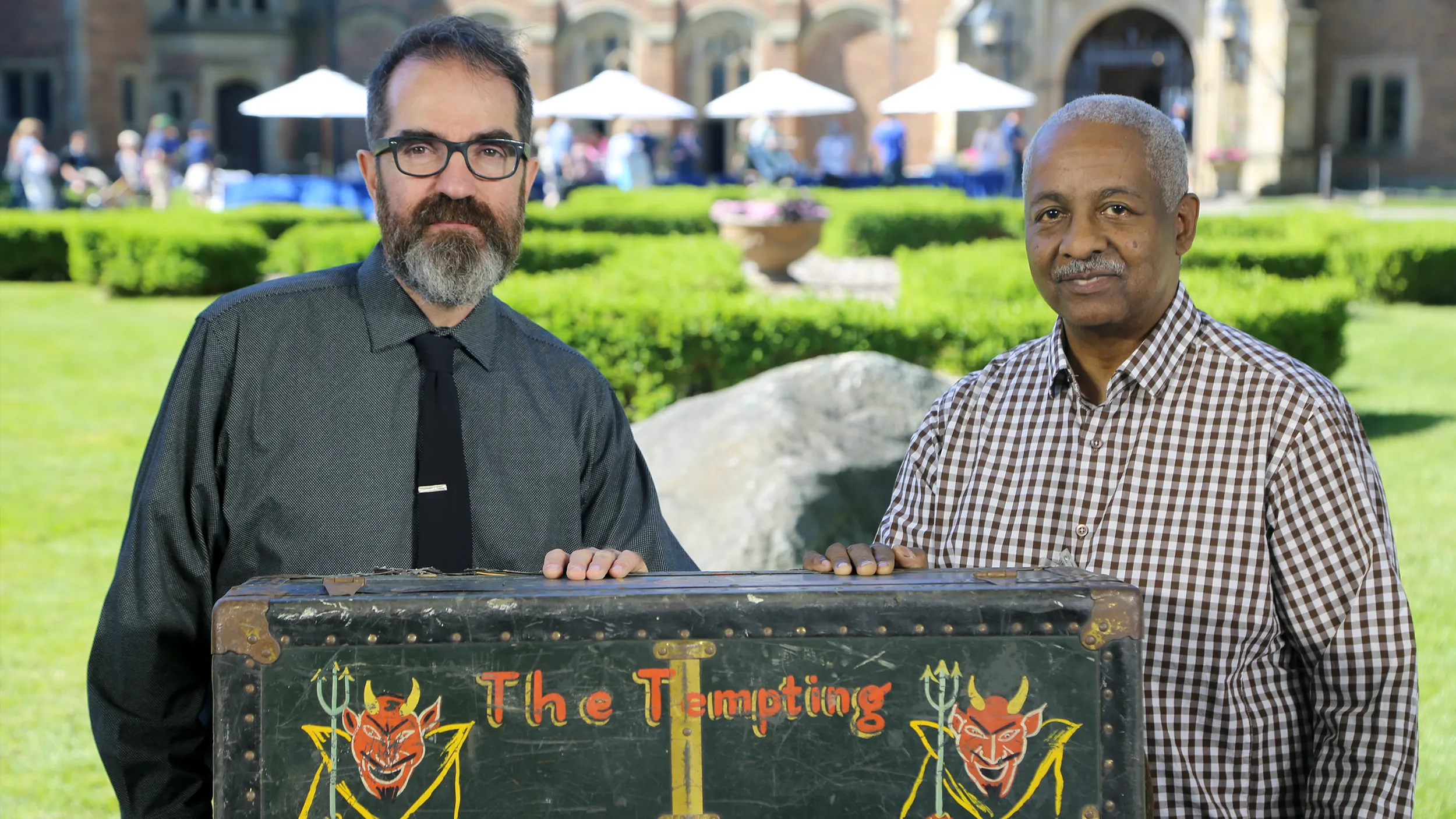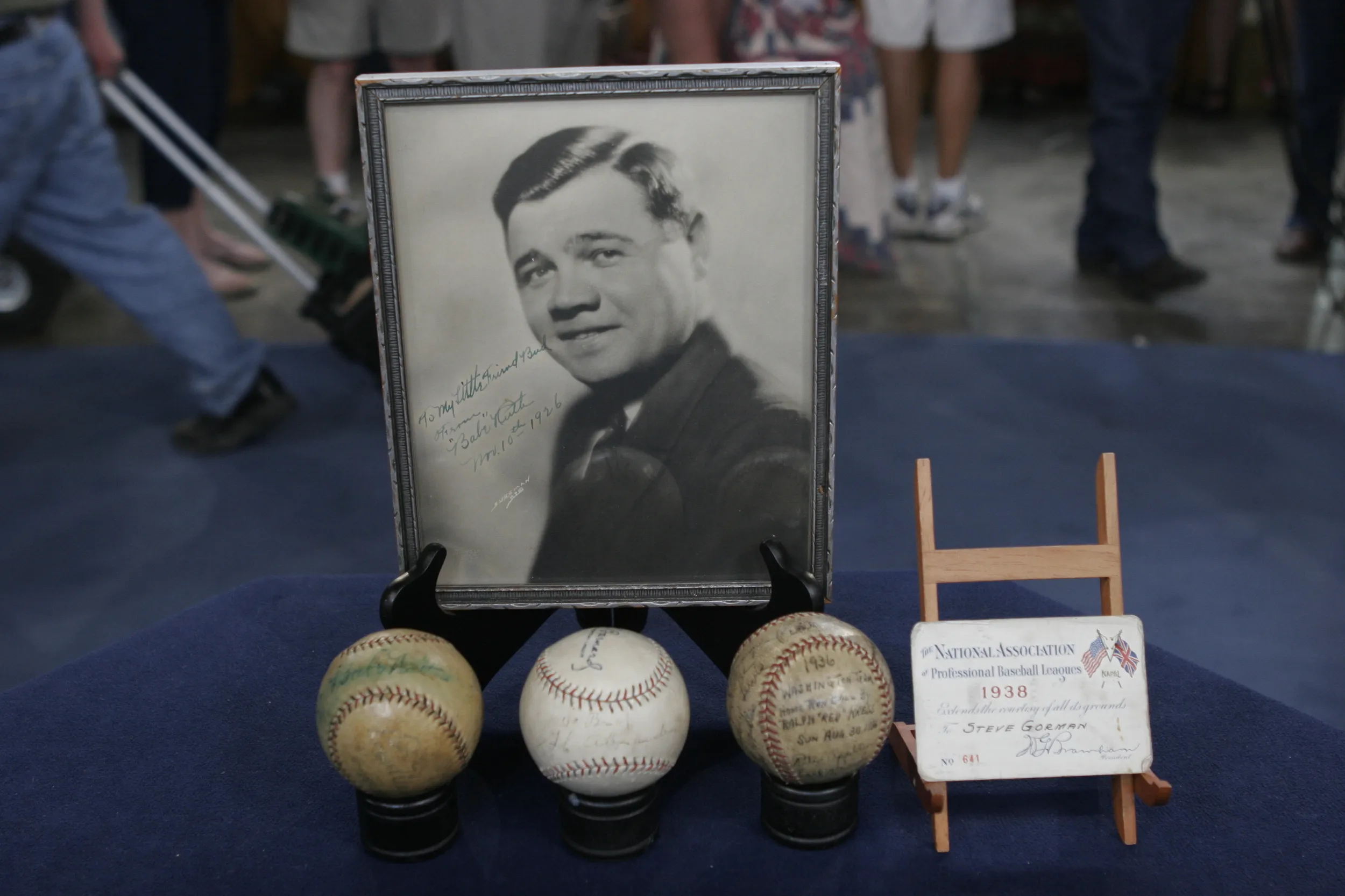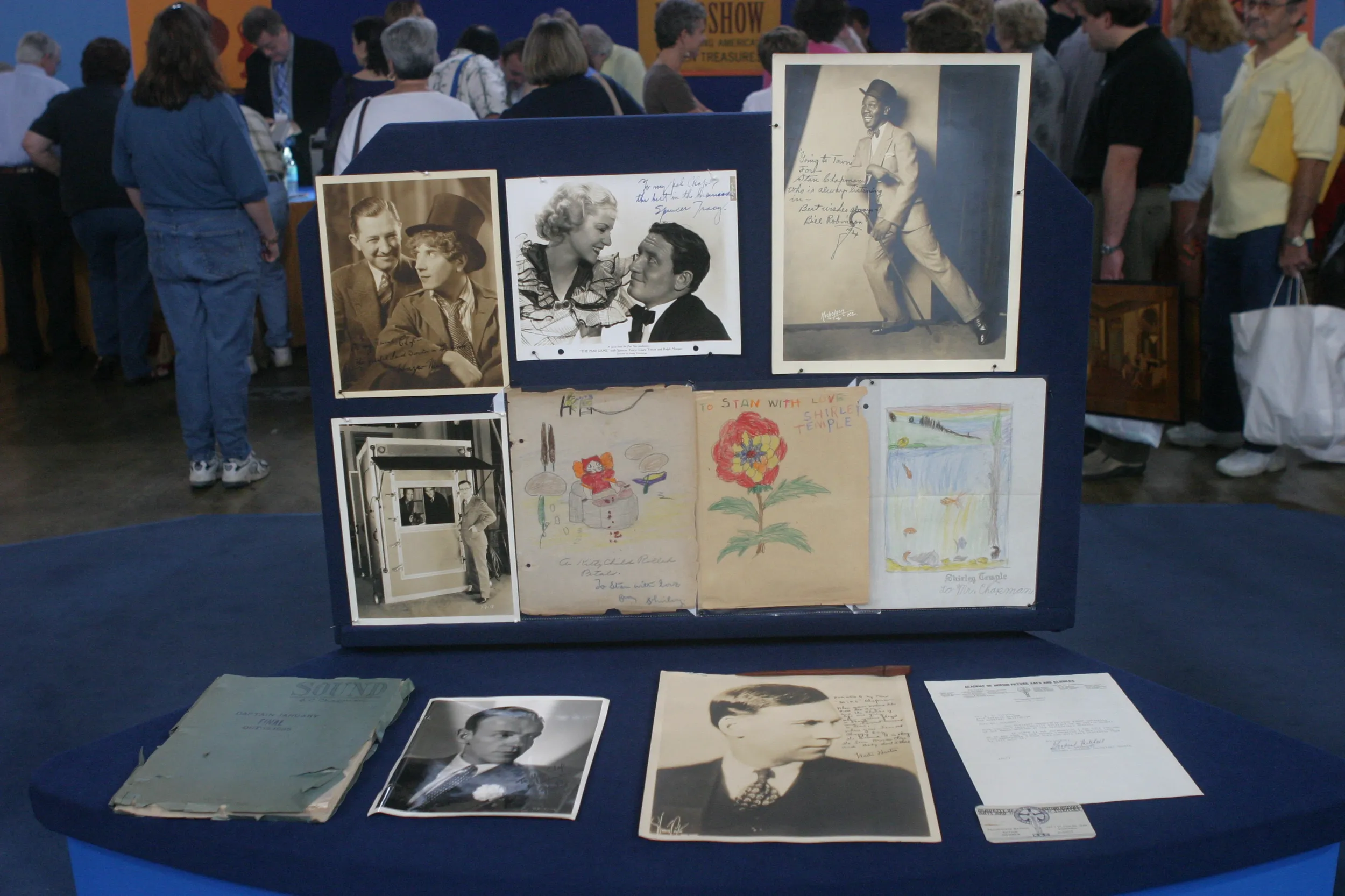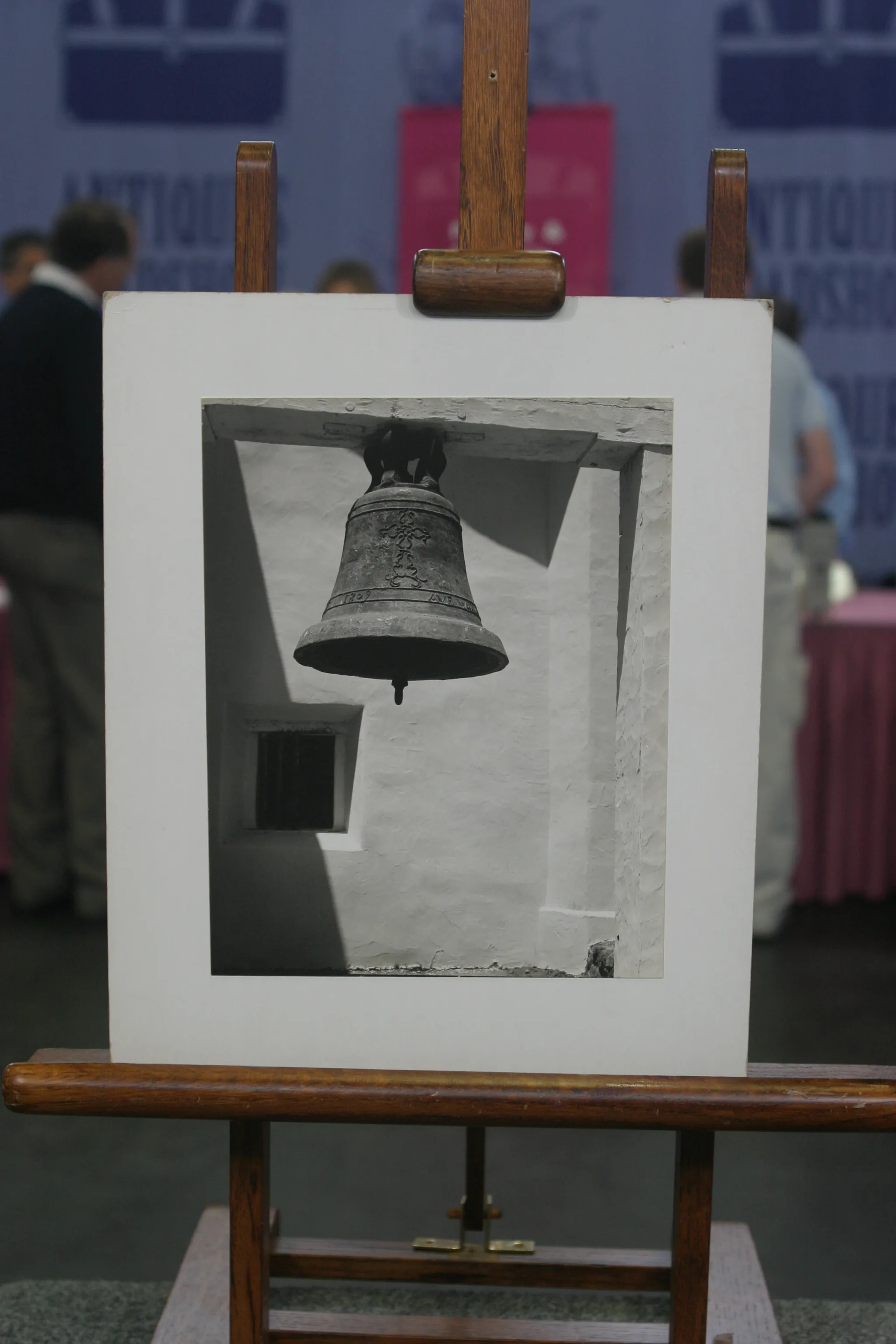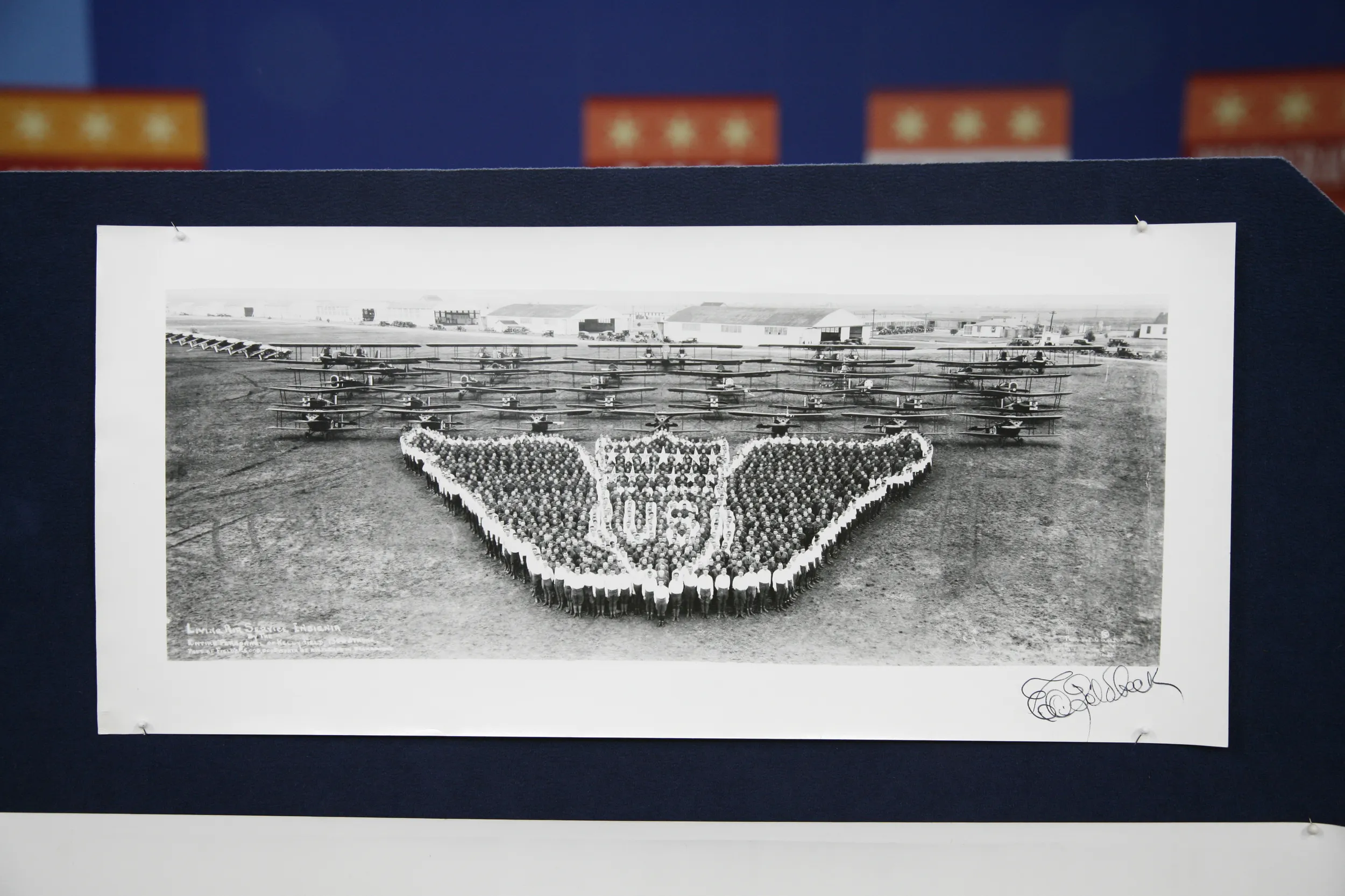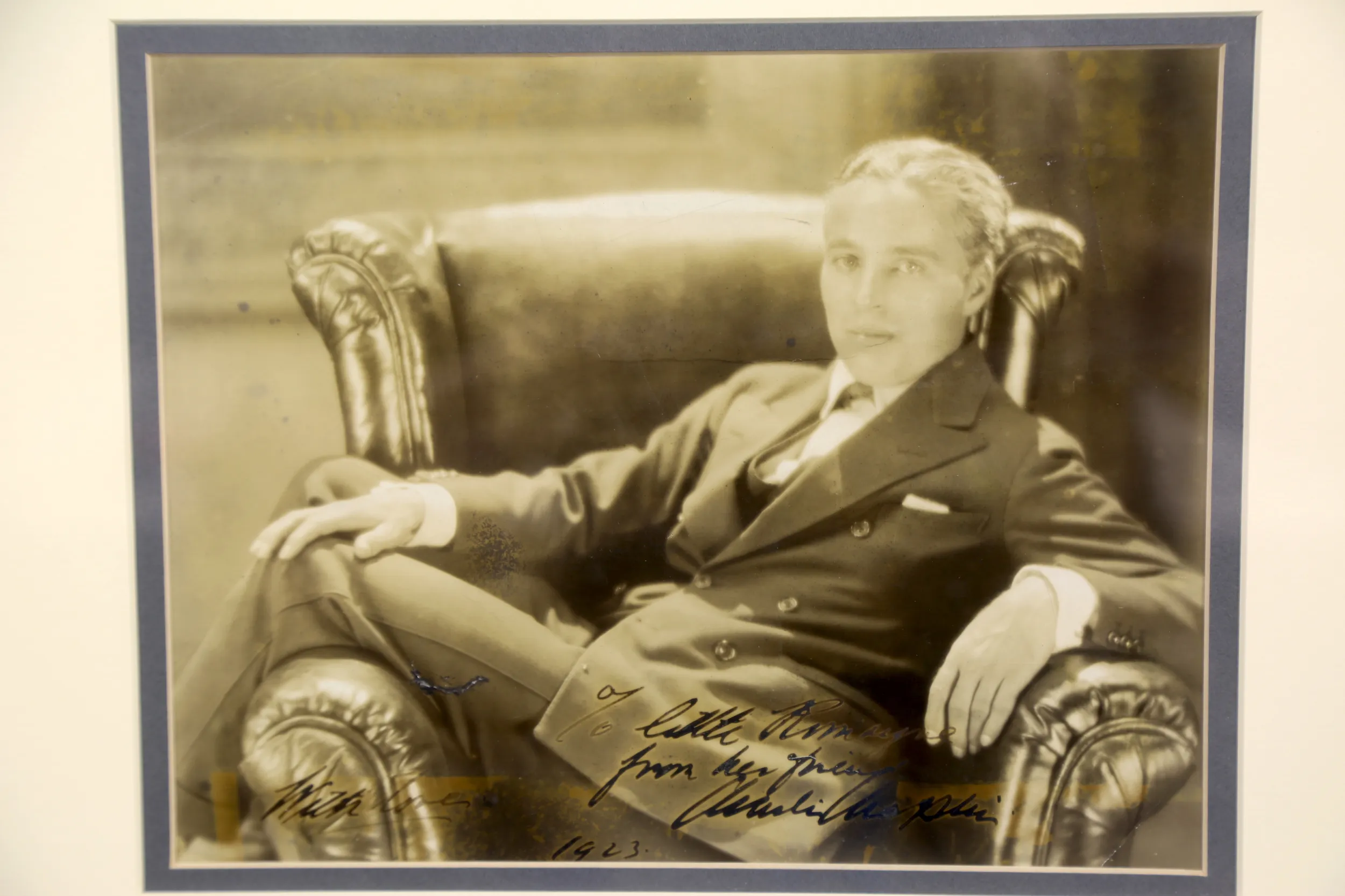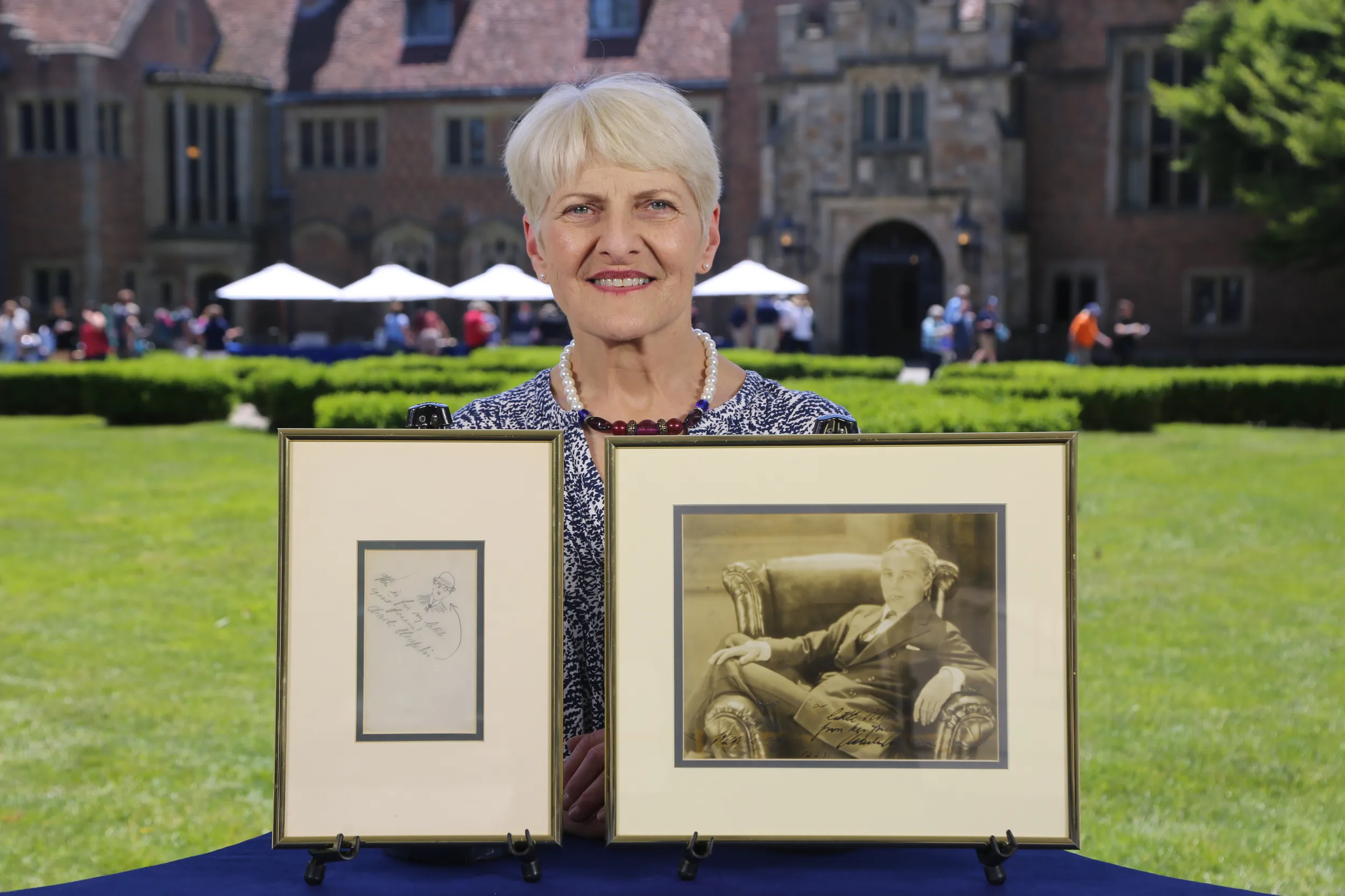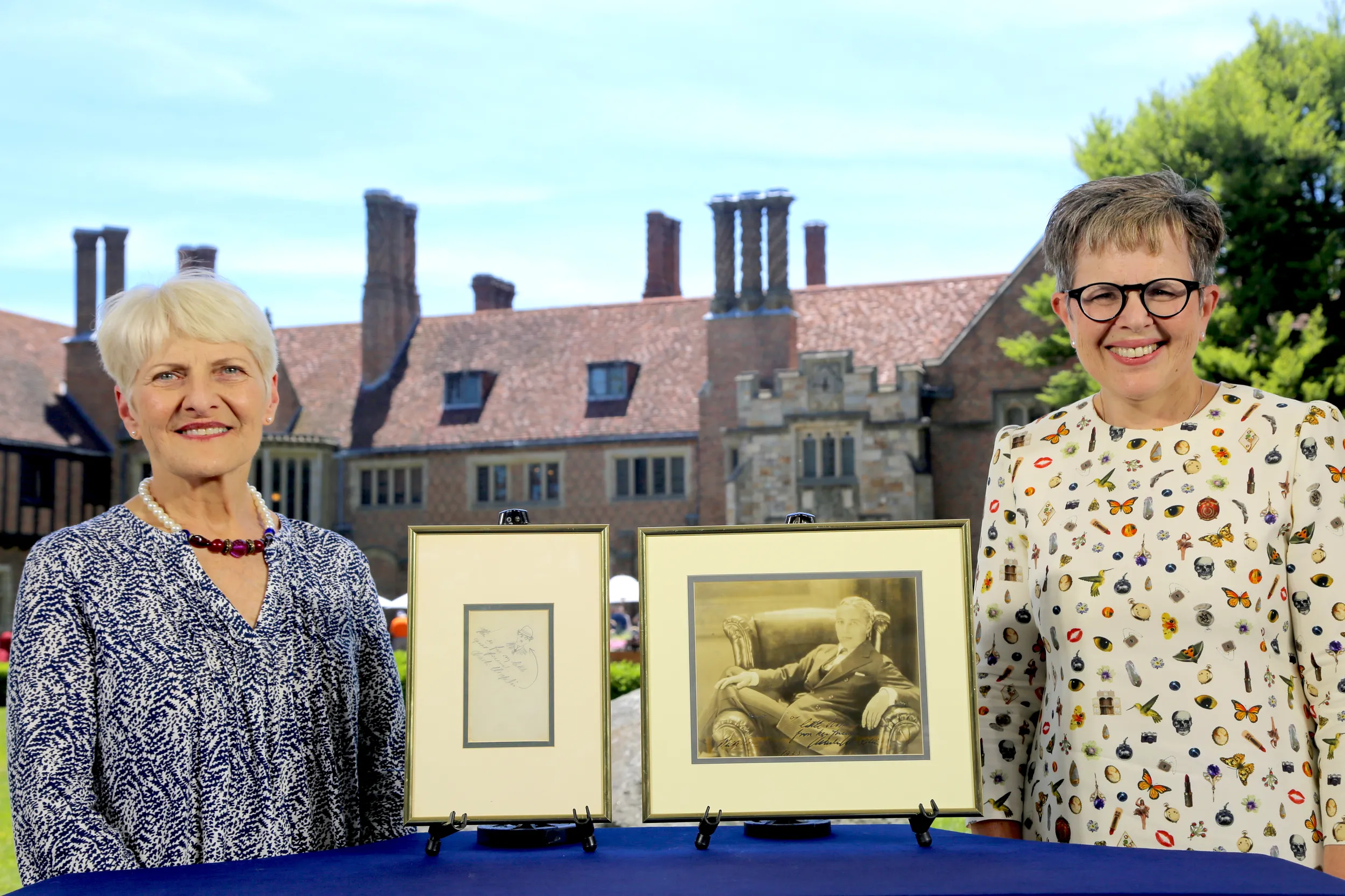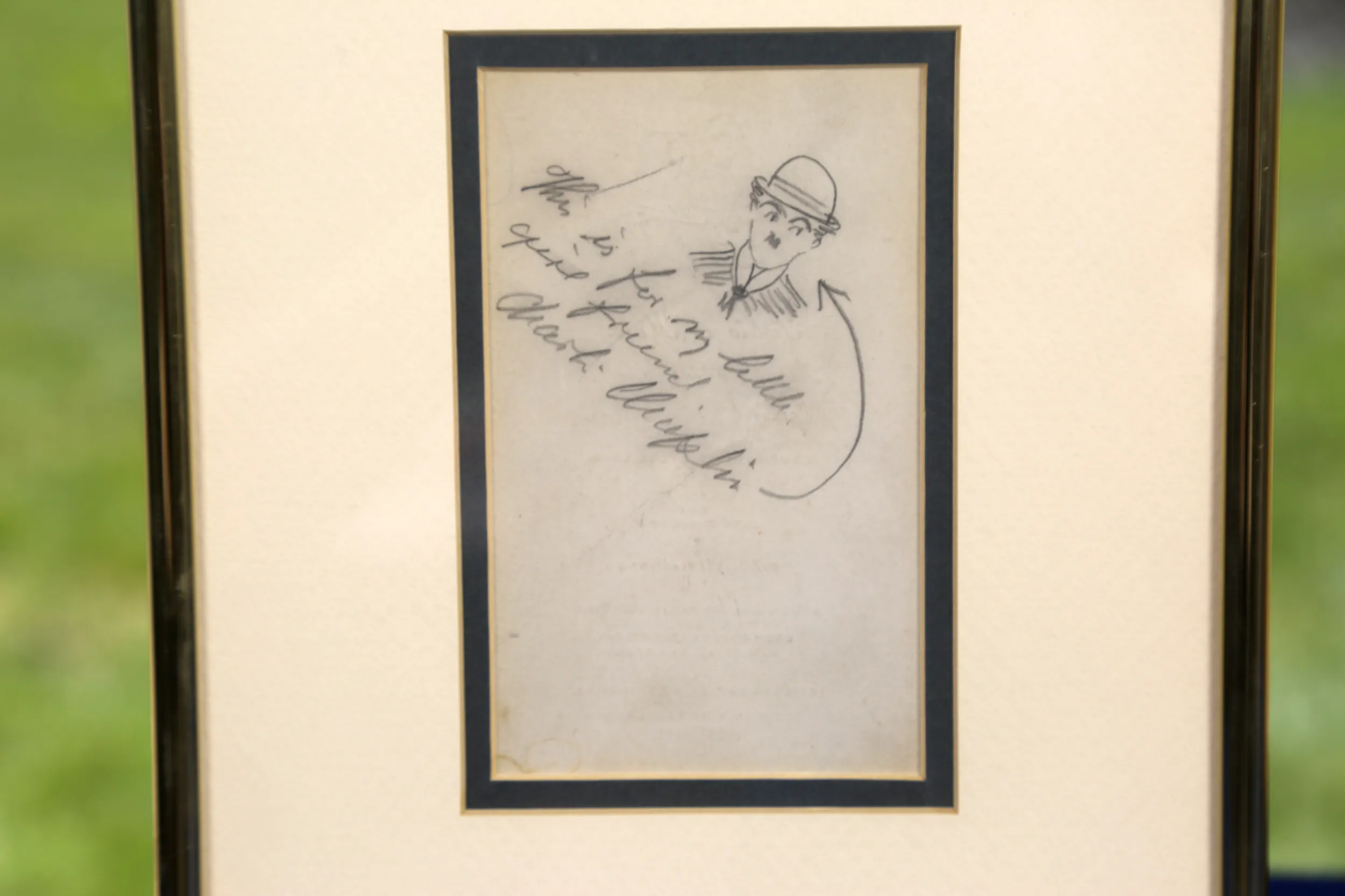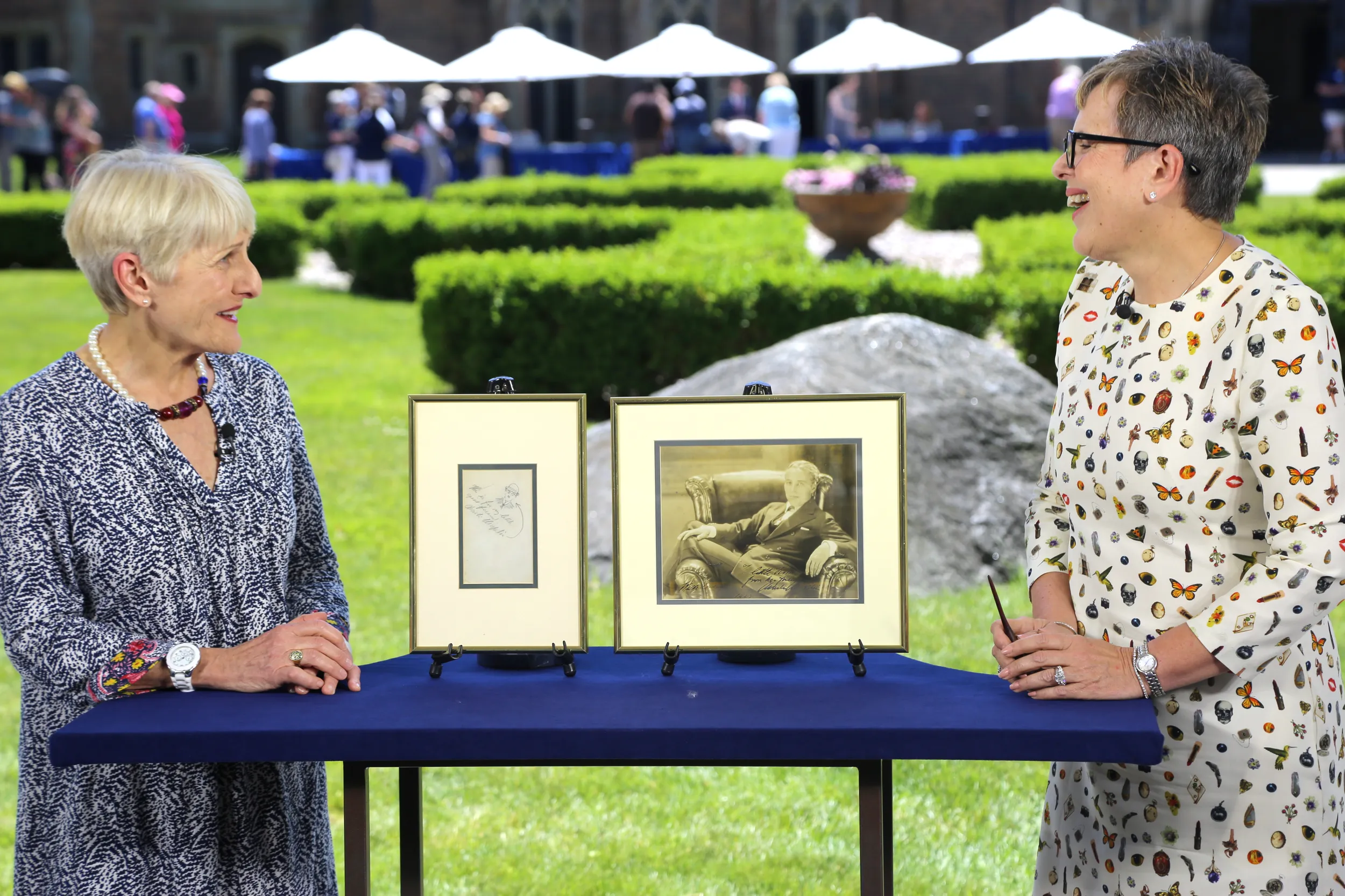APPRAISER: We have a whole audience out there that doesn't know silent screen stars, and Charlie Chaplin is one of the biggest. So we have this wonderful drawing and this photograph. Tell me, how did you get them?
GUEST: Well, they were my mother's. She passed away a couple of years ago and left them to me. She was with her family out in California, in Hollywood, in 1923, three-and-a-half years old, staying in a hotel. And Mr. Chaplin was there, as well, and dining by himself in the hotel dining room, and she recognized him, and got down from her chair-- high chair, probably-- and walked over to him. He picked her up and put her on his lap, and he signed the menu, and then on the front he did his little caricature, and signed it. And then the picture was sent to my mother back in Detroit, from Mr. Chaplin, in 1923.
APPRAISER: Well, it's a wonderful story and I'm so glad you brought these things
in. Mr. Chaplin was born in poverty in England, and when he came to the United States, he popularized a character in 1914 called the Little Tramp. And it was the perfect muse for a silent film star, because you could do a lot of acting and pantomime without using your voice. And we see in the caricature here, the Little Tramp with his signature mustache and eyebrows and bowler hat. It's just the most charming thing. And then later, he sends her this beautiful sepia photograph. By this time, he is one of the major stars in Hollywood. And in fact, in 1919, he, with other silent film stars, started their very own studio, United Artists. He started it with D.W. Griffith, Douglas Fairbanks, Jr., and Mary Pickford. They had total control over their films. It was really a very special time in Hollywood. And we can see here in this photograph of him in his early 30s, that he was really the kingpin of Hollywood, wasn't he? And we have the wonderful signature. And the date, which is really lovely, because we can tell exactly when it was done. His drawings come up very infrequently, and to have one that shows the Little Tramp is really quite special and very collectible. I think in an auction, we would put a pre-sale estimate of between $2,500 and $3,500, and it could even bring a little bit more than that.
GUEST: All right.
APPRAISER: The picture is of the Golden Age of Hollywood and the king of Hollywood. It would be worth a little less, because he's inscribed it to her-- because people like to buy things that are signed that they think were to them. But the picture would be between $1,500 and $2,500.
GUEST: Very nice-- thank you.

